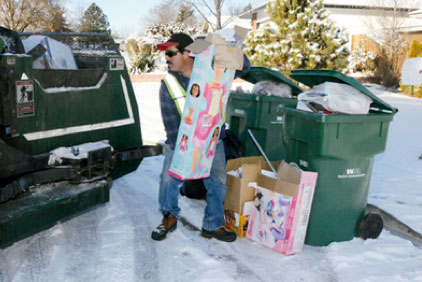Mardi Gras is big business. The first known celebration was held in 1702 in the newly established Mobile, a port city settled by two French explorers, Pierre Le Moyne d’Iberville and Sieur de Bienville. Today, Mardi Gras parades and parties now happen in cities and towns stretching across the Gulf Coast, from Louisiana, Mississippi, and Alabama all the way down into the Florida Panhandle.
One of the oldest celebrations in the United States, it brings tens of thousands of tourists to the region each year, supporting airports and airlines, hotels and car rental agencies, restaurants, and bars. The annual economic impact of Mardi Gras is estimated at $1 billion in New Orleans and more than $400 million for Mobile, according to a 2020 Wallethub report. Mardi Gras adds revenue to a wide range of economic sectors, from services to manufacturing to tourism and retail.
Businesses that make a significant portion of annual revenues from Mardi Gras season include: float builders and decorators, costume, dress and mask makers, barricade providers, food trucks, rental agencies, ballroom rental (venues), catering, bead and candy factories as well as local musicians, bands and street performers. Vendors along parade routes pay for licenses and can earn significant sums during the brief two weeks of the season, for example.
The downside of Mardi Gras
But the economic impact stretches far beyond the parades and fun. Crowd control, parties, and the inevitable post-party clean-up can cost hundreds of thousands of dollars, especially for local city governments charged with providing security for parade routes and policing areas where tourists frequent. The New Orleans Police Department spent more than 54,000 man-hours during the 12 days of Mardi Gras in 2019, according to the New Orleans Police & Justice Foundation. Firefighter companies, health, and emergency medical services as well as city waste collectors and clean-up crews can cost cities millions in annual expenses.
When covering Mardi Gras, many reporters focus on the fancy purple, gold, and green costumes or the lavishly decorated floats and the crowds of drunken revelers. But for business reporters, Mardi Gras represents an economically important event that can be vital to a city or town’s annual GDP.
In Mobile, Alabama, for instance, more than 1 million people participated in the two weeks of celebrations in 2019, prior to the start of the pandemic. Nearly 13,000 jobs in Mobile and neighboring Baldwin county are directly related to Mardi Gras celebrations, according to the Mobile Carnival Museum website citing an independent study conducted in 2004 by University of Alabama researchers Samuel Addy and Ahmad Ijaz.
Digging deeper into regional holidays
Reporters can dig deeper into the economics of Mardi Gras by first doing research and interviews with local government offices and officials, local chambers of commerce (especially in New Orleans and Mobile, where the largest celebrations are held), and local tourism boards.
For granularity, reporters should interview costume makers and float building companies, candy shops, decoration shops (which are often seasonal pop-ups that only exist during the season), hotels, bed-and-breakfast inns, and car rental agencies as well as cafés, restaurants, bakeries, and bars. Reporters can also connect with museums and non-governmental organizations.
Though not well-known, much of the work of Mardi Gras is organized by the (non-profit but still revenue-generating) Mardi Gras societies (known regionally as ‘krewes’). Krewes charge membership dues, as much as $1200 per person in some cases and the largest krewes have thousands of members. They also host lavish balls and luncheons, where entrance tickets can cost from $60 to $250 per person.
Some questions reporters should be asking to understand the financials behind the flash:
• How many visitors arrive in the city during the Mardi Gras season?
• What is the percent of GDP generated by Mardi Gras-related activities?
• How many jobs are related to Mardi Gras in the private and in the public sectors?
• How much does the city budget for police/fire/emergency medical services/clean up during Mardi Gras?
• How much does the city earn in fines/fees and other municipal taxes?
• How many krewes are active in the parades and what are the sizes of their membership? What is the cost of membership? How many balls are thrown and what are the ticket prices? Where are these balls thrown and how much do ballroom rentals cost?
• How much does a float cost to produce and decorate?











